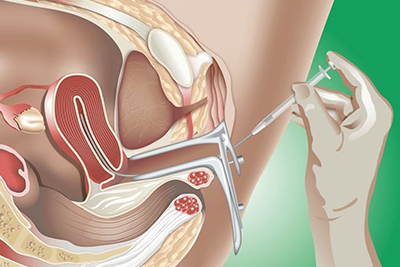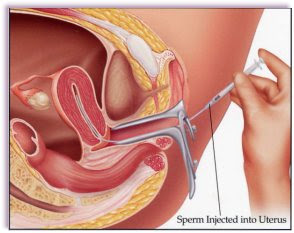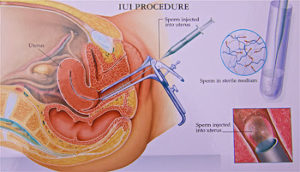Treatment Options For Infertility: Assisted Reproductive Techniques (ART)
Treatment Options For Infertility: Assisted Reproductive Techniques (ART)

Although various definitions have been used, ART includes all fertility treatments in which both the eggs and sperm are manipulated.
In general, ART involves surgically removing eggs from a woman’s ovaries, combining them with sperm in the laboratory, and returning them to the woman’s body or donating them to another woman.
Some forms of ART are also used in fertile couples for genetic reasons. ART is also used in couples who are discordant for certain communicable diseases, e.g. AIDS, to reduce the risk of infection when a pregnancy is desired.
The term includes any reproductive technique involving a third party e.g .a sperm/egg donor.
In addition, ART is often categorized according to whether the procedure used a woman’s own eggs (non donor)or eggs from another woman(donor)and according to whether the embryos used were newly fertilized(fresh)or previously fertilized, frozen and then thawed(frozen).
TYPES OF ASSISTED REPRODUCTIVE TECHNIQUES (ART)
Examples of ART includes the following;
- In Vitro Fertilization (IVF)
- Intra Cytoplasmic Sperm Injection(ICSI)
- Intracytoplasmic Morphologically Selected Sperm Injection(IMSI)
- Pre-implantation Genetic Diagnosis/Screening(PGD/S)
- Testicular Epididymal Sperm Aspiration(TESA)
- Percutaneous Epididymal Sperm Aspiration(PESA)
- Laser Assisted Hatching(LAH)
- Surrogacy
- Sex selection. E.t.c
Whereas some are of the opinion that IUI (Intra Uterine Insemination) is not part of ART and some believe that it’s part of it but we will go ahead and discuss it as well.
INTRA UTERINE INSEMINATION (IUI) OR ARTIFICIAL INSEMINATION (AI)

Human artificial insemination with the male partner’s sperm for infertility began in the 1940s.
The IUI procedure can be effective for some causes of infertility in women.
INDICATIONS FOR IUI:
Unexplained Infertility, Mild Sperm Dysfunction, Women with cervical factors, Post cancer treatment or post, vasectomy and Sex selection
Unexplained infertility: This is a situation, in which no apparent reason can be found for difficulties in achieving pregnancy. It could also be explained as infertility cases in which the standard infertility testing has not found a cause for failure to get pregnant. Unexplained infertility is also referred to as idiopathic infertility. Another way to explain it is the “doctors can’t figure it out” group.
Mild Sperm Dysfunction: Some men may have mild dysfunctions such as borderline sperm counts, reduced motility, or reduced semen volumes.
Women with cervical factors: Occasionally, the mucus found at the neck of the womb may be abnormally unconducive to sperm, possibly due to the presence of antibodies.
Post cancer treatment or post vasectomy: Men, who had their sperm frozen prior to vasectomy, or cancer treatment, will need to have IUI carried out on their sperm.
Sex selection: After separation of sperm into X and Y bearing samples using Micro sort or any other technique.
HOW IS IUI CARRIED OUT?
1. The woman usually is given medications to stimulate development of multiple eggs and insemination is timed to coincide with ovulation – release of the eggs.
2. A semen specimen is better produced in the clinic by masturbation after 2-5 days of abstinence from ejaculation.
3. The semen is “washed” in the laboratory (called sperm processing or sperm washing). The sperm is separated from the other components of the semen and concentrated in a small volume. Various media and techniques can be used for the washing and separation. Sperm processing takes about 30-60 minutes.
4. A speculum is placed in the vagina and the cervical area is gently cleaned.
5. The washed specimen of highly motile sperm is placed in the uterine cavity (intrauterine insemination, IUI) using a sterile, flexible catheter. This help to bypass the cervix and gives direct access to the tubes.
The intrauterine insemination procedure, if done properly, should seem similar to a pap smear for the woman. There should be little or no discomfort.
Most clinics offer for the woman to remain lying down for a few minutes after the procedure, although it has not been shown to improve success. The sperm has been put above the vagina and cervix – it will not leak out when you stand up.
SUCCESS RATES FOR INTRA UTERINE INSEMINATION

For a couple with unexplained infertility, female age under 35, trying for 2 years, and normal sperm – we would generally expect about:
• 10% chance per month of getting pregnant and having a baby with intrauterine
insemination and Clomid for up to 3 cycles (lower success after 3 attempts)
• 15% chance per month of getting pregnant and having a baby with injectable FSH medication (e.g. Follistim, Gonal-F, Bravelle or Menopur) and IUI for up to 3 cycles
• Ages over 35,is in most cases not worthwhile due to decline in egg quality.
Many studies have shown that insemination with drugs to stimulate multiple eggs to ovulate gives a higher success rate than doing IUI without drugs, called natural cycle IUI.
HOW MANY INSEMINATION DO I TRY BEFORE IVF?
• The short answer is to move on to IVF after 2 or 3 failed IUIs
• Do not consider IUI at all if sperm parameters are poor
• If the female is age 35 or older, or ovarian reserve low, consider IVF earlier
• In vitro fertilization has a significantly higher success rate as compared to IUI
SHOULD ONE OR TWO INSEMINATIONS BE DONE PER CYCLE?
There are many published studies that address this. Some studies show no improvement in pregnancy success rates with two inseminations done on sequential days as compared to one well-timed insemination. Other studies show higher pregnancy rates when two inseminations are done on back to back days.A possible explanation for the different findings is that if single insemination are not properly timed for ovulation, success rates would improve with a double insemination protocol. At least one of the 2 inseminations might be timed correctly. Most fertility experts believe that one well-timed IUI is sufficient.



